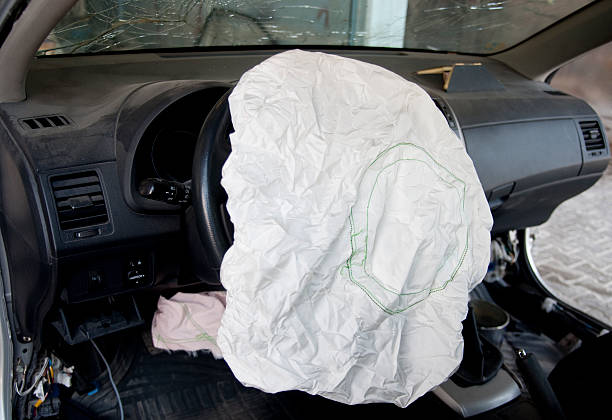November 7, 2023
How hard do airbags hit you?
Airbags are designed to deploy rapidly in the event of a collision to help protect vehicle occupants from injury. The force with which an airbag deploys can vary depending on several factors, including the speed of the collision, the design of the airbag system, and the specific make and model of the vehicle.
In general, when an airbag deploys, it can hit you with a significant amount of force. However, the force is typically less than the force of the collision itself, and the airbag is designed to cushion and slow down your forward motion to reduce the risk of injury. The idea is to provide a protective barrier between you and the vehicle’s interior, which may contain hard surfaces like the steering wheel, dashboard, or windshield.
While airbags can cause some discomfort, such as bruising or soreness, they are considered much safer than the alternative of directly impacting the vehicle’s interior during a collision. The force of airbag deployment is carefully engineered to strike a balance between providing protection and minimizing the risk of injury.
It’s worth noting that airbags are most effective when used in conjunction with seat belts. Seat belts help restrain your body during a collision, preventing you from moving too far forward and allowing the airbag to do its job more effectively.
In any case, it’s essential to follow proper safety practices, such as wearing your seatbelt, to maximize your chances of staying safe in a car accident. If you’re ever involved in a collision where the airbags deploy, it’s a good idea to seek a medical evaluation, even if you don’t initially feel injured, as some injuries may not be immediately apparent.
How fast does an airbag hit you?
The deployment speed of an airbag can vary depending on the specific make and model of the vehicle, as well as the design of the airbag system. However, in general, airbags are designed to deploy extremely rapidly, typically within milliseconds (thousandths of a second) of a collision being detected.
The high-speed deployment is intentional because it allows the airbag to inflate quickly and create a cushioning barrier between the vehicle’s occupants and the hard surfaces of the interior, such as the steering wheel, dashboard, or windshield. This rapid inflation helps reduce the forward motion of the occupants, mitigating the risk of injury.
The exact deployment speed can vary, but it is generally in the range of 100 to 200 miles per hour (160 to 320 kilometers per hour). This rapid deployment is a critical aspect of an airbag’s effectiveness in protecting vehicle occupants during a collision.
Again, it’s important to emphasize that airbags are most effective when used in conjunction with seat belts. Seat belts help restrain the occupants and keep them in the proper position for the airbags to provide the best protection. Always wear your seat belt while driving or riding in a vehicle to maximize your safety in the event of an accident.
How often do airbags fail?
Modern airbag systems are highly reliable and have a very low failure rate when properly maintained and used as intended. The automotive industry has stringent safety standards and regulations in place to ensure the effectiveness and reliability of airbags. When deployed under the right conditions, airbags are generally very effective at reducing the risk of injury during a collision.
However, like any mechanical or electronic system, airbags can potentially fail or not deploy as intended in some rare circumstances. Some factors that can contribute to airbag failures or issues include:
- Sensor Malfunction: Airbags rely on sensors to detect a collision or rapid deceleration. If these sensors malfunction or are damaged, they may not trigger the airbags.
- Electrical Problems: Issues with the electrical components of the airbag system, such as wiring or the control module, can affect airbag deployment.
- Faulty Installation or Repairs: Incorrect installation or repairs to the airbag system can lead to malfunctions or failures.
- Vehicle Age: As vehicles age, various components, including the airbag system, may deteriorate, increasing the risk of failures. Manufacturers often have recommendations for the replacement of airbags or related components after a certain number of years.
- Vehicle Recalls: In some cases, vehicle manufacturers issue recalls to address specific airbag-related issues. It’s essential to stay informed about recalls and have any necessary repairs performed promptly.
- Incompatibility with Child Seats: Some newer vehicles have advanced airbag systems that can be incompatible with rear-facing child seats. Proper precautions and awareness are necessary when using child seats in vehicles with airbags.
While the likelihood of airbag failure is low, it’s crucial to maintain your vehicle properly, follow manufacturer recommendations, and stay informed about any recalls or safety-related issues. Regular vehicle maintenance, including inspections by qualified professionals, can help ensure that your airbag system functions as intended. Additionally, always use seat belts in conjunction with airbags, as they work together to provide the best protection in the event of a collision.

